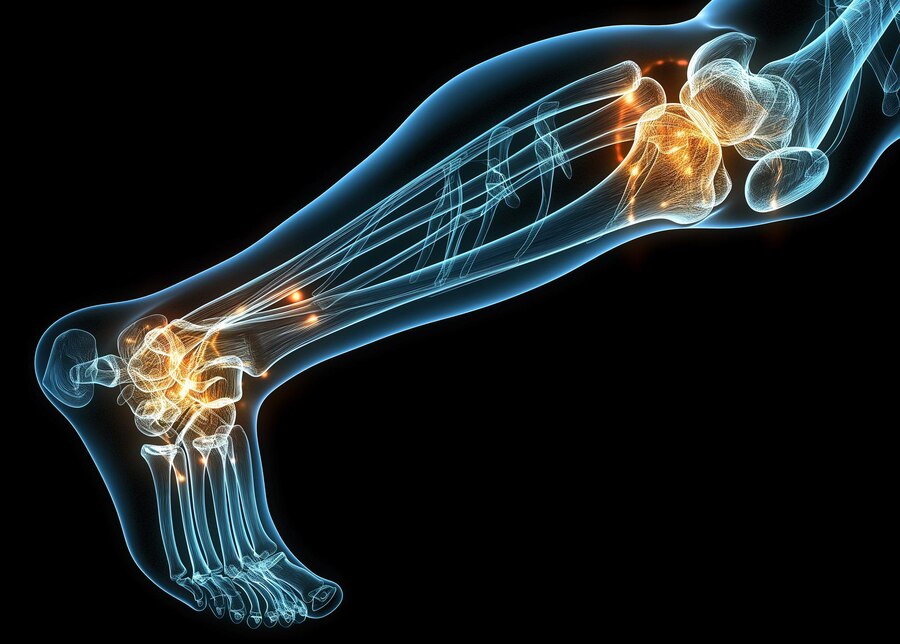Having healthy and strong bones is very important for good health, especially a bit later in life. One way to expand bone density and benefit bone health is via regular exercise. Exercise brings solidity to muscles and generates bone construction, thereby maintaining mass and bone strengthening to reduce the danger of suffering osteoporosis and fractures. This blog post will discuss the positive effect of exercise for bone health, giving importance to weight-bearing activities, resistance training, and high-impact aerobics to elicit better bone density.

Importance of Exercise to Bone Health
1. Bone Remodeling
Exercise can stimulate the process known as bone remodeling, through which old bone tissues are resorbed, and then new and greater tissues are formed.
Exercise-related Benefits:
Mechanical Stress: Weight-bearing and resistance exercises impose mechanical stress on the bones to stimulate the development of new bone tissue and enhance the existing bone structure.
Bone Density: Routine exercise preserves or stimulates the increase of bone density by strengthening the bones, and hence it reduces the chance of bone loss.
2. Muscle Strength and Balance
Well-built muscle strength and appropriate balance are the chief contributors to the prevention of falls and fractures.
– Muscle Strength: Exercise improves muscle strength, and the muscles support and protect bones, decreasing the possibility of injuries.
– Balance and Coordination: Activities that enhance balance and coordination can help prevent falls, which is one of the major causes of fractures, mainly in older people.
Best Exercises to Improve Bone Density
1. Weight-Bearing Exercises
Weight-bearing exercises are activities that involve supporting most of your body weight independently. This helps stimulate the growth of bones and maintains their density.
• Walking: This is a low-impact activity that can easily be fitted into everyday routines. Forcing the pace slightly will deliver gentle stimulation toward bones, especially when walking is undertaken over variable terrain.
• Running and Jogging: These high-impact, weight-bearing activities apply greater stress to bones, increasing bone density.
• Stair Climbing: Stair climbing exercises the lower body muscles and bones, thereby activating them for enhanced bone strength and leg strength.
• Hiking: Entails walking in rugged terrains that put a heavy demand on the muscles and bones, hence ideal as a weight-bearing exercise.
2. Resistance Training
Resistance training is also called strength training, and it is where you carry out exercises with free weights or resistance bands to work out and build your muscles and bones.
Free Weights: Squats, lunges, and deadlifts are some of the free weights exercises that that you can carry to help in muscle and bone development of bones of the lower body and the spine.
– Resistance Bands: Bicep curls, shoulder presses, and leg lifts are just a few examples of resistance band exercises. They offer a low-impact alternative to conventional weight lifting.
– Bodyweight Exercises: Push-ups, pull-ups, and planks all use body weight as a means of resistance and to stimulate your bones.
3. High-Impact Aerobics
High-impact aerobics are those that make your feet leave the ground. This shall help develop one’s density in the bones and makes one’s heart healthier.
– Jump Rope: Jumping rope is a dynamic high-impact exercise that strengthens bones in the legs, hips, and spine.
– Dance: Especially those dance routines which involve jumping or vigorous movement associated with them make for an excellent way of enjoying a high impact exercise and building bone mass.
– Aerobic Classes: Jumping, hopping, and fast-paced aerobic movements are incorporated into classes like step aerobics, thereby stimulating the bones and enhancing overall fitness.
4. Balance and Flexibility Exercises
Although neither impacts bone density directly, exercises that increase balance and flexibility assist in preventing falls, which are supportive of overall bone health.
• Tai Chi: A low-impact exercise. Tai Chi is an exercise that increases balance, flexibility, and muscle strength, thereby decreasing the risk of falling and resulting in fractures.
• Yoga: Specific yoga stretches to increase flexibility and balance, thereby reducing the risk of joint injury.
– Stretching: Consistent stretching increases flexibility and range of motion, which leads to good balance and movement.
How to Get Exercising to Fit in Your Life
1. Build Slowly
In case you are not experienced or have not been active, you should start slow and pick up the pace and duration as your body adapts to the exercises. This will help you avoid injury and sustain your exercise.
2. Consistency Should Be Key
Exercise works for bone health only when it is done regularly. This means getting in at least 30 minutes of weight-bearing and resistance most days of the week.
3. Mix It Up
Exercise many types of exercises so that majority of the muscle groups are challenged, and see varied benefits from workouts. A mix in weight-bearing, resistance, high-impact aerobics, and some balance exercises serves broadly to benefit bone health.
4. Utilize Proper Technique
Weight control, proper form, and technique will make your exercises more effective and minimize the possibility of injury. If you still can’t be sure whether your moving form is correct or not, consider hiring a fitness professional.
5. Listen to Your Body
Hear your body. Avoid overexertion. If you feel pain or discomfort, have modified exercises or consult a health provider.
Conclusion
Exercise really is an excellent enhancer of bone mass and one way through which we can have strong, healthy bones. Such exercises as weight-bearing, resistance, high-impact aerobics, and balance exercises can be included in your workout to support bone health and reduce the risk of osteoporosis, helping to enhance general well-being. Embrace diverse exercises and enjoy the many benefits that come from having stronger, resilient bones.